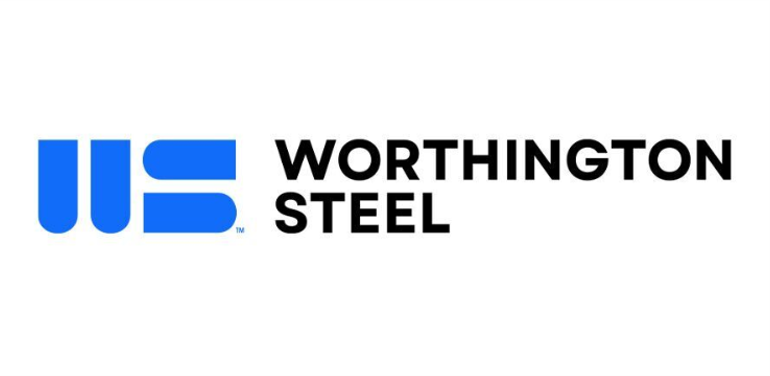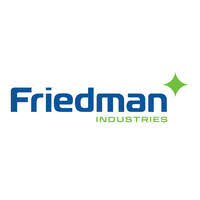Service Centers

Ryerson Posts Net Profit of $13.5 Million
Written by Sandy Williams
May 7, 2016
Ryerson Holding Corporation reported net income of $13.5 million for the first quarter of 2016, compared to a loss of $2.5 million for the first quarter of 2015. Revenues were $702.6 million for the first quarter of 2016, down 19.1 percent from the year-ago period due to a 19.4 percent decline in the average selling price per ton. Tons shipped increased 0.4 percent to 478,000 tons. Average selling price per ton was $1470 and average cost per ton was $1,611. Gross margin increased 21 percent compared to 17.3 percent in Q1 2015.
Carbon steel shipments for Q1 totaled 367,000 tons, up 7 percent from Q4 and down -0.3 percent year over year. Carbon steel sales of $354 million were up 2.3 percent from the previous quarter.
Aluminum and stainless steel shipments rose by 9.5 percent and 14.8 percent, respectively.
“We are encouraged by current trends throughout the global metals supply chain where prices are resetting to levels above the cash costs of production,” said president and CEO Eddie Lehner. “Although there is a lag effect between mill price increases and service center price realizations, we expect higher metals prices as we move through the second quarter and for the balance of the year based upon current visibility of emergent supply side trends.
During the earnings conference call, Ryerson said it is open to further acquisitions where the company can add high value and high margin. Lehner said Ryerson looks at both build and “bolt-on” acquisitions (purchase of existing operations).
“We don’t really believe in paying for holding gains in inventory, and we don’t believe in paying for huge amounts of goodwill that aren’t really substantiated by unique and differentiated capabilities,” said Lehner. “That said, we have an active pipeline and we look at deals all the time, more of the bolt-on variety, but we look at them all the time and we have an active pipeline. And when we can come to terms with one of those, we’ll look forward to that announcement.”
Kevin Richardson, President, South-East Region, commented on supply conditions and market share:
“This is the first time in a couple of years that supply has been relatively tight in some products. And so in the past, some smaller distributors, that maybe are not aligned with any particularly mill, strategically would be able to jump in and out of the spot market and get tons on very short lead time. And what we’re seeing right now is that mill lead times have extended. And in some cases, I mean mills– I am not going to use the word allocation– but for sure there are certain categories that are tight on supply. That material is not easy access for smaller distributor so we’re definitely seeing some holes out there in capitalizing and that’s obviously playing to our favor in terms of market share.”
Speaking further on lead times and inventory, Lehner added that the industry got caught with bare spots in inventory.
“You can be a little bit skeptical when prices run ahead like they have. You are going to be skeptical, you are going to wait as you are going to a destocking cycle. It took a long time for inventories to clearly channel at the end of 2014 and 2015. And so there was a lot of destocking. But what delayed the destocking was it was hard to find clearing prices that were above the historical cost in inventory.”
Lehner added that service centers were “probably little bit shocked right now by the speed or magnitude of the increases that are being enforced by the mills. The mills are pretty united on this. We haven’t any seen any holes in the mill armor in terms of enforcing these price increases. So I think customers now are … accepting that realization that prices are going to go up and they need to buy at least to support their backlogs…and probably even consider a mild long position at this point.”
Richardson added, “We do not see customers building inventory right now.”
For a short term forecast, Lehner said, “We think as we get through Q2 and in Q3 we certainly think we’ll see the best quarters of the year.
“There’s a realization that people don’t want to drink leaded water and they don’t want to see trains derail and they don’t want to see bridges collapse. They don’t want to see roads decayed. And so we’ve been under investing for a long, long time. And when you read the St. Louis Federal Reserve Bank’s report on what this period resembles most from 2009 through 2015 into 2016, the period it resembles most is 1929 and 1941–and I think we all know what that period of time was like. And so we’ve been underinvested in really the U.S.’s physical capital for a long time. You’re even seeing people come out now like Carl Icahn, like Warren Buffet, that are talking about this idea that investment has been very weak and subpar and manufacturing has been under-utilized for some period of time. So we think there are catalysts that are starting to emerge for secular growth improvement in manufacturing and in physical investment.”
Jim Claussen, regional CFO, added, “Just to tag onto what Eddie said, we are certainly starting to see some signs of investment in infrastructure, highway signs, bridge work, things like that, that are good positive signs we’re seeing. And then we’re also speaking a little bit geographically, seeing some nice improvement in some industrial sectors up in Eastern Canada.”
On trade, Lehner noted that steel producers are presenting a united front in supporting trade cases and that the effort has been effective.
“One of the things that’s really interesting is that the United States has run a trade deficit for 41 years. Since 1975 we’ve run a trade deficit. The goods and services deficit in 2015 was $532 billion and the goods deficit alone was $760 billion. And the two countries that had the biggest surplus were China and Germany and it is not coincidence they seem to have growing and very stable middle classes. And so when you look at the climate in this country right now politically and you look at what people believe is the plight of the middle class, you could argue that our trade deficit maybe is out of balance and that some of these things need to come back into balance. And people’s sensibilities and their actions are slowly starting to reflect that. So I do think it’s a different time and we’ll see how lasting it is.”

Sandy Williams
Read more from Sandy WilliamsLatest in Service Centers

Worthington Steel fiscal Q4 profit rises despite sales drop
Worthington Steel earnings rose while sales fell in its fiscal fourth quarter.

Friedman’s profits tick higher on record quarterly sales volumes
Friedman Industries' earnings increased in its fiscal fourth quarter ended March 31.

Worthington expands European presence with closing of Sitem deal
The Ohio-based steel processor is now the majority owner of Italy's Sitem Group, which has six manufacturing sites across Italy, Switzerland, Slovakia, and France.

Klöckner narrows Q1 loss, targets growth in North America and Europe
Germany’s Klöckner & Co. reported a narrower loss in the first quarter as the company targets becoming the “leading” service center and metal processing firm in North America and Europe by 2030.

Russel mulls buying US service centers despite Q1 profit dip
Russel Metals’ earnings slipped in the first quarter, but the company is still eyeing service center acquisitions in the US.
